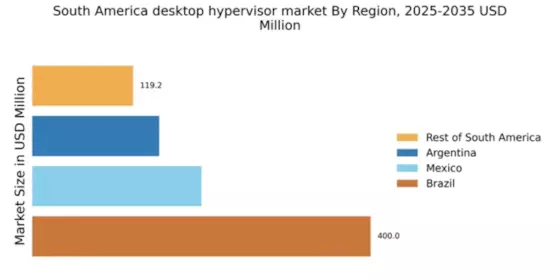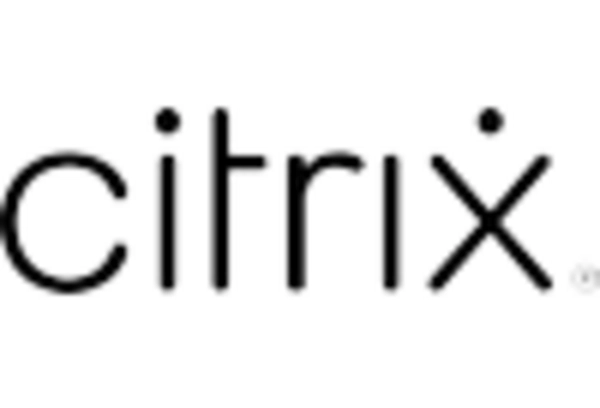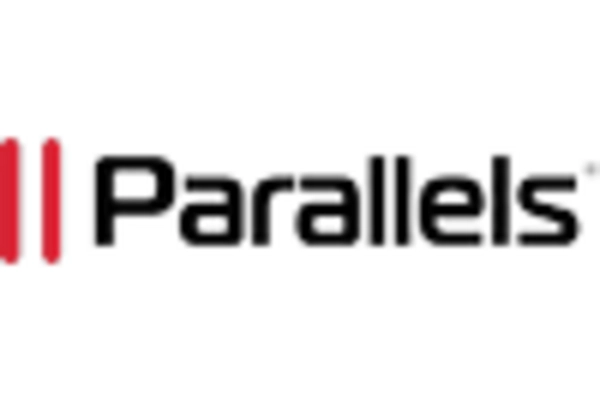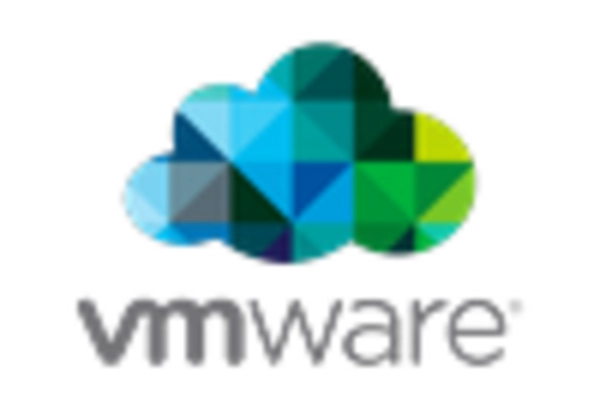Emergence of Hybrid IT Environments
The emergence of hybrid IT environments is a key driver for the desktop hypervisor market in South America. Organizations are increasingly adopting hybrid models that combine on-premises infrastructure with cloud services, necessitating effective virtualization solutions. This trend is particularly relevant as businesses strive for greater agility and responsiveness in their operations. In 2025, it is anticipated that over 30% of enterprises in South America will implement hybrid IT strategies, creating a substantial demand for desktop hypervisors. The desktop hypervisor market is thus positioned to cater to this need, providing solutions that facilitate seamless integration between different IT environments. As companies navigate the complexities of hybrid setups, the role of desktop hypervisors becomes increasingly critical in ensuring operational efficiency and data security.
Growing Focus on Remote Work Solutions
The desktop hypervisor market in South America is witnessing a growing focus on remote work solutions, which is reshaping the way organizations operate. As businesses adapt to flexible work arrangements, the demand for desktop virtualization technologies is on the rise. In 2025, it is estimated that around 40% of the workforce in major South American cities will engage in remote work, necessitating robust virtualization solutions. This shift is driving the desktop hypervisor market to innovate and provide secure, scalable, and efficient remote access solutions. Companies are increasingly investing in desktop hypervisors to ensure seamless connectivity and collaboration among remote teams. Consequently, this trend is likely to propel the market forward, as organizations seek to enhance productivity and maintain operational continuity.
Increased Investment in IT Infrastructure
The desktop hypervisor market in South America benefits from increased investment in IT infrastructure across various sectors. As businesses recognize the importance of modernizing their IT systems, there is a marked shift towards adopting virtualization technologies. In 2025, IT spending in the region is projected to reach approximately $50 billion, with a significant portion allocated to virtualization solutions. This investment trend is driven by the need for enhanced scalability, flexibility, and cost-effectiveness in IT operations. The desktop hypervisor market is poised to gain from this influx of capital, as organizations seek to leverage virtualization to improve their operational efficiency. As a result, the market is likely to experience robust growth, fueled by the ongoing transformation of IT infrastructure.
Rising Demand for Virtualization Solutions
The desktop hypervisor market in South America experiences a notable surge in demand for virtualization solutions. Organizations are increasingly recognizing the benefits of virtualization, such as improved resource utilization and cost efficiency. In 2025, the market is projected to grow at a CAGR of approximately 15%, driven by the need for businesses to optimize their IT infrastructure. This trend is particularly evident in sectors like finance and healthcare, where operational efficiency is paramount. As companies seek to reduce hardware costs and enhance flexibility, the adoption of desktop hypervisors becomes a strategic imperative. The desktop hypervisor market is thus positioned to capitalize on this growing demand, as more enterprises transition to virtual environments to streamline operations.
Government Initiatives Supporting Digital Transformation
In South America, government initiatives aimed at promoting digital transformation significantly impact the desktop hypervisor market. Various countries are implementing policies to encourage the adoption of advanced technologies, including virtualization. For instance, Brazil's digital strategy emphasizes the importance of cloud computing and virtualization in enhancing public services. This governmental support is likely to foster a conducive environment for the desktop hypervisor market, as public and private sectors align their strategies with national objectives. The financial backing and regulatory frameworks provided by governments can lead to increased investments in virtualization technologies, thereby accelerating market growth. As a result, the desktop hypervisor market stands to benefit from these initiatives, potentially leading to a more robust technological landscape.


















Leave a Comment